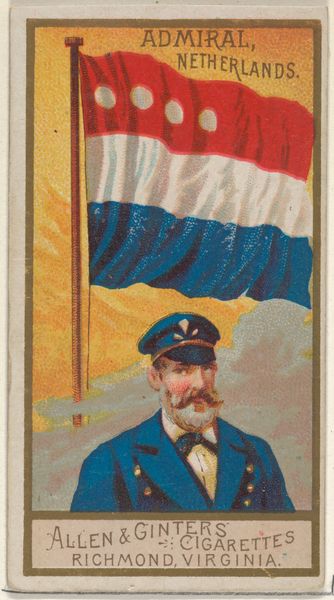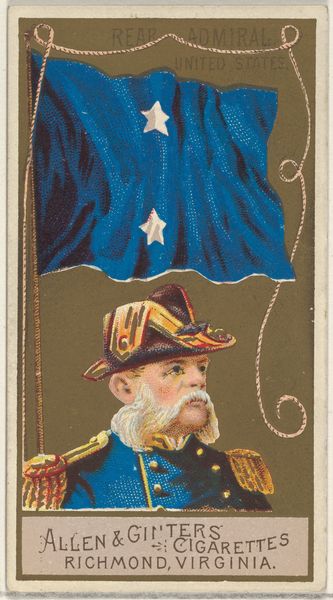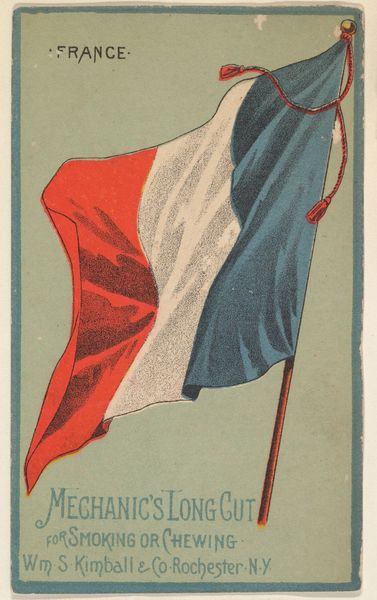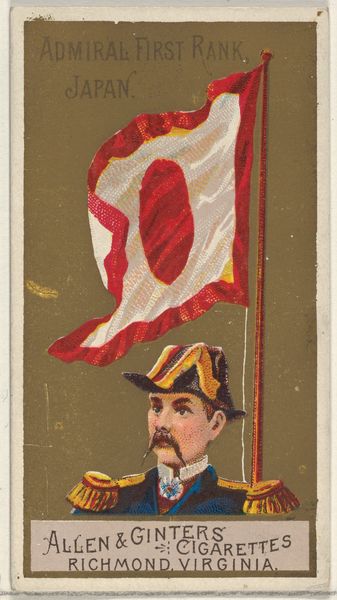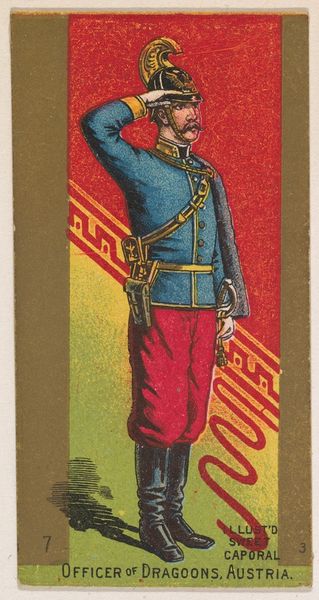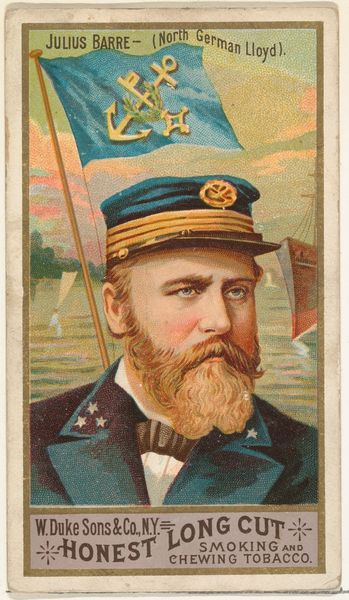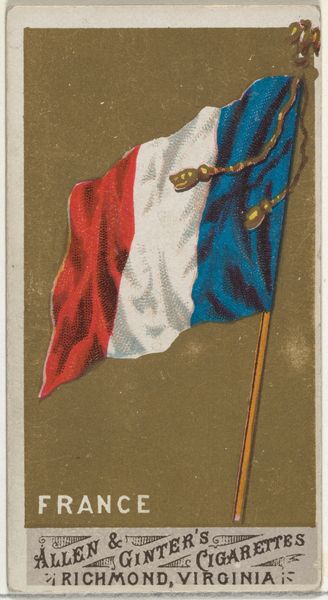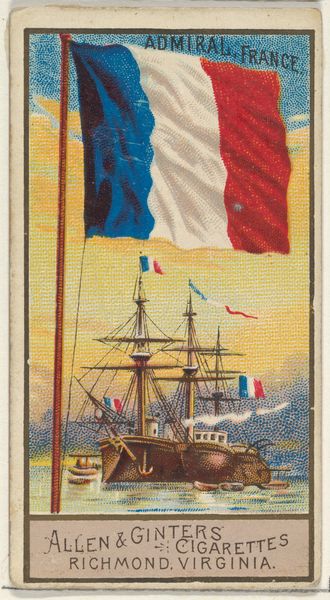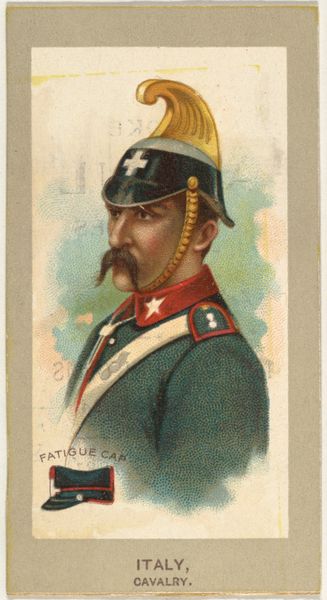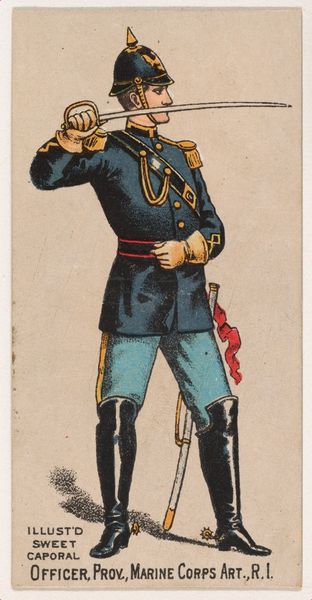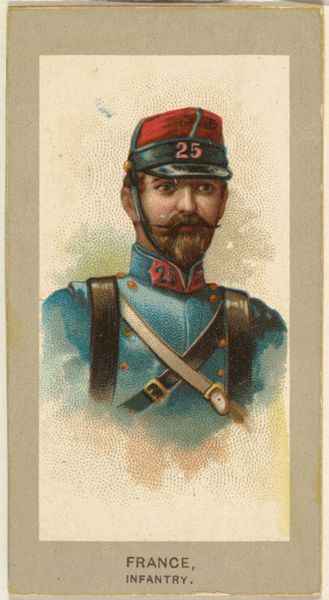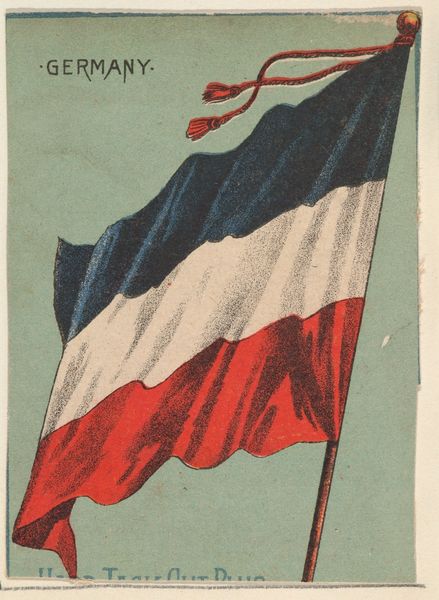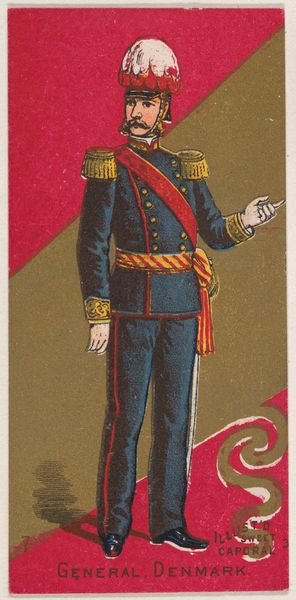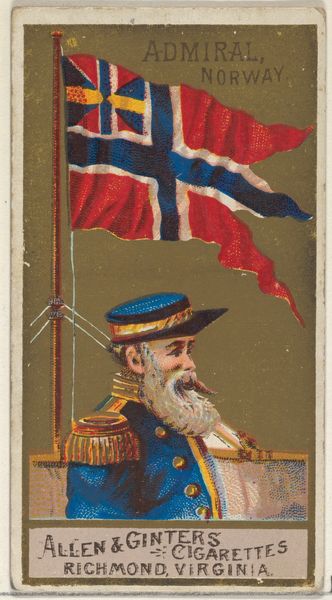
Rear Admiral, France, from the Naval Flags series (N17) for Allen & Ginter Cigarettes Brands 1886 - 1891
0:00
0:00
drawing, print, watercolor
#
portrait
#
drawing
# print
#
watercolor
#
men
#
watercolour illustration
#
history-painting
#
portrait art
Dimensions: Sheet: 2 3/4 x 1 1/2 in. (7 x 3.8 cm)
Copyright: Public Domain
Curator: At first glance, this card presents a strangely compressed composition; the Admiral, flag and promotional text are densely arranged within the available space. Editor: The intensity of the image definitely jumps out. The sharp lines of the flag against the softer rendering of the Admiral’s face create an intriguing visual tension, even a slight disharmony. Curator: This piece is one from a series produced between 1886 and 1891 by Allen & Ginter Cigarettes. The card, a color print and watercolor drawing, depicts a "Rear Admiral, France" and belongs to their Naval Flags series. Editor: Looking closely, the juxtaposition of textures fascinates me – the flat color fields of the French flag hovering above the subtly modeled face of the Rear Admiral. The almost aggressively crisp details on his cap pull the eye. Curator: Right, and that clash of visual languages is no accident. Consider the historical moment – the burgeoning of mass media, the rise of nationalistic fervor, and the power of branding. The cards were not mere giveaways. Editor: Certainly. And while the perspective is foreshortened and flattened, notice the restricted palette contributes to the harmonious impression as well. There's gold, navy blue and just a splash of red and white which is mostly limited to the flag above. Curator: Allen & Ginter used these vibrant cards to associate their brand with concepts like global power and sophistication, while appealing to consumer desire for collecting. It is very shrewd marketing to connect smoking with patriotic pride. Editor: Yes, but the artistic choices are what really hold my attention. The way the gold background brings out the warm hues of the face or directs us toward the yellow braid and metal of his naval finery and ornamentation. Curator: These objects provide critical context. These seemingly disposable items offered pathways for reinforcing social hierarchies of the period. What appears celebratory also perpetuated inequalities. Editor: And by noticing the material constraints that define the aesthetic achievement of this miniature portrait, perhaps, we gain greater perspective and empathy toward this time. Curator: Absolutely. I think this image underscores that everything is interconnected; our personal aesthetic experience and broader social and political context. Editor: I see so much more here than just the historical and visual details in the image. Thanks for pointing out the social considerations within this commercial context.
Comments
No comments
Be the first to comment and join the conversation on the ultimate creative platform.
